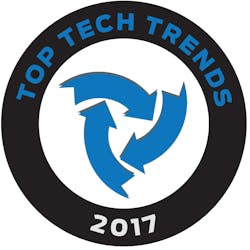“Deep learning” is probably the hottest term in healthcare these days, but coming in a close second might be “social determinants of health.” What economic and regulatory forces are making health systems focus their energy on gathering data on social determinants and share data more broadly across sectors?
One is the transition away from a fee-for-service payment system to one that rewards providers for the value of care they offer, which adds a level of accountability. “That has created a pretty dramatic awakening for those in a position to be receptive, in that they control only a very narrow portion of an individual’s or a population’s health,” says Alison Rein, senior director of evidence generation and translation for Academy Health in Washington, D.C. Rein leads the Community Health Peer (CHP) Learning Program, a partnership with the Office of the National Coordinator for Health IT (ONC) to establish a national peer learning collaborative of 15 communities to address specified population health management challenges through increased sharing and use of electronic data.
Alison Rein
Health systems don’t have as big an impact as they think they do on the real things that drive cost, Rein says. Instead, she says, “They need to figure out how to work with others outside their system if they really want to thrive in a few years. It is no longer OK to spend an increasing proportion of our gross domestic products on healthcare services without getting any better outcomes.”
Some providers have started by focusing on the social needs of “high utilizers” or “familiar faces” in the emergency room. That spotlight helps people to understand social determinants as a concept, but the place where the ultimate return on investment will be is further down the line, says Peter Eckart, co-director of Data Across Sectors for Health (DASH), which was launched by the Robert Wood Johnson Foundation to identify barriers, opportunities, promising practices and indicators of progress for multi-sector collaborations to connect information systems and share data for community health improvement.
CHP and DASH have joined forces with a few other efforts to create All In: Data for Community Health, which is helping communities build capacity to address the social determinants of health through multi-sector data sharing collaborations. Together, All In represents the insights from 50 community collaborations across the country.
Peter Eckart
Eckart says All In’s work is experimental. “We believe it to be true that a focus on the social determinants gives us a more complete picture of what is happening to individuals and communities. But it has been hard to make a return-on-investment argument because there have not been enough places where it has been tried. That is why our work exists.”
Collecting social determinant data in the electronic health record (EHR) at the point of care is another challenge being addressed in several projects.
Building Social Determinant Tools into EHRs
Jennifer DeVoe, M.D., chair of the Department of Family Medicine at Oregon Health Sciences University in Portland, is working on pilot projects to gather social determinant data in the EHR. She says a primary care team sees people often and can identify some of these needs.
“We are looking at ways to use that data to help us identify people at risk and trigger referrals,” she explains. “As a primary care physician, I can identify a patient who has a cardiovascular condition and who might need to be referred to a cardiologist, and I can put that consult into my EHR, and hopefully information flows back to me,” she says. “The analogy would be in partnering with social service agencies and others who address a patient’s social vulnerabilities. Certainly it is not as easy as referring a homeless patient to a housing service, but it is a first step.”
She says her team also has experimented with a set of community vital signs. By bringing those into the EHR, they could know who is living in an area that is vulnerable and potentially act on that information.
Jennifer DeVoe, M.D.
Devoe calls this area of research very nascent, but she believes it has incredible potential. “Zip code is more predictive of health outcomes than genetic code is,” she says. “After collecting this information in the EHR, the next step for us is figuring out how to partner more effectively with the larger communities of organizations.”
Andrew Hamilton, chief informatics officer and deputy director of the Alliance of Chicago Community Health Services, is working on another EHR-related project sponsored by the National Association of Community Health Centers. The goal of PRAPARE (Protocol to Respond to and Assess Patient Assets, Risks, and Experiences) is to create and implement a national standardized patient risk assessment protocol to assess and address patients’ social determinants of health.
The Alliance helped develop questions in the protocol and built the tool in the EHR so that it could be collected in the clinical workflow. They also structured the data so it could be used for reporting and analysis. “Some of the data elements we wanted, such as level of educational attainment, were new to the work flow and new to the EHR collection, so they required thinking about where to put the fields. We didn’t want to haphazardly start adding fields to databases.”
One issue each clinic in the pilot had to work through was which staff members they wanted gathering the social determinant data from the patient and how to explain to patients why this new data is being gathered.
Andrew Hamilton
“Now that we have identified sustainable strategies to collect these data,” Hamilton says, “the next phase of our work is focused on how we use the data to enrich the plan of care. That includes referrals we might make to community service providers that can help patients address those concerns, particularly around transportation, housing and legal aid. Another goal is to use the data at an aggregate level in a community to talk with public health authorities and other interested stakeholders about things that the community might need to invest in.”
Role for HIEs
Some regional health information organizations are playing a role in social determinant projects, Eckart says. Altair Accountable Care for People with Disabilities is a DASH grantee that, with funding and leadership from Lutheran Social Services of Minnesota, is integrating behavioral health providers into the regional health information exchange to improve care coordination for patients with disabilities. “These behavioral health organizations are working with the HIE to move from competing with each other to collaborating with each other,” Eckart says.
In another example, a program led by Baltimore City Health Department includes CRISP (Maryland’s HIE), community-based organizations and nonprofits, and faculty at Johns Hopkins and the University of Maryland. They are leading a citywide effort to reduce falls among residents age 65 and older. They are creating a real-time data surveillance system that will track fall-related emergency department visits and hospitalizations. The project is also integrating core medical data with other health, housing, environmental and social service data related to fall risks. “The relationship between the health department and HIE is an important part of what they are doing, in terms of using multi-sector and city data and health data provided by CRISP as a way to hot-spot falls in the city,” Eckart explains.
In a CHP-supported project in Southwest Washington state, the Providence Center for Outcomes Research and Education is building a shared data system that will aggregate public records, insurance claims, and public health data for community-based population health management. They will conduct a multi-sector analysis that brings together data on healthcare encounters, housing assistance, school attendance, and corrections to identify at-risk populations.
“These projects are starting to allow communities to generate hypotheses and explore the impact of what they are doing,” Rein says.
Rein and Eckart say all the organizations they support have to work through technical and policy issues around consent and data sharing. Another level of difficulty is that many of the organizations don’t see themselves as data holders or curators or even connected to health, Rein adds. “As with any health IT effort, there are sociocultural dimensions. There are strong governance and business dimensions. I tend to think of interoperability requiring alignment across all those things, including business process alignment. We have found that the smaller the project, in terms of the number of entities, the more likely it is that they can come together around a common vision and establish lines of communication, and shared interest and the accountability to make it happen.”





